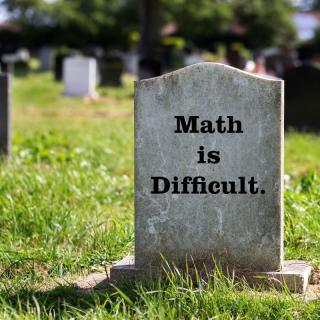Human traffickers do not discriminate when it comes to their victims, according to Amy O’Grady, director for criminal justice initiatives for the state Attorney General’s Office (AGO).
“They are targeting anyone who is vulnerable, and anyone they think that they can gain control over,” she said.
According to the Ohio Human Trafficking Commission, a preliminary report on the scope of the problem in the state cited 13 as the most common age for youth to become victims of child sex trafficking. From the study’s sample of 207 individuals, 49 percent were under 18 when they were first trafficked. Nationally, over 100,000 children are thought to be involved in the sex trade.
As a result, state law enforcement officers are conducting more human trafficking investigations and identifying more potential traffickers and trafficking victims than have ever been reported before. And while it may seem like a crime that is more prevalent in Ohio, it is not the case.
“We are hearing about cases here more frequently than other states, but this is not because Ohio has more trafficking than other places, it is because Ohio recognizes that human trafficking is taking place and is working to identify victims and uncover traffickers,” O’Grady said.
According to the Ohio AGO 2014 Human Trafficking Report, last year law enforcement agencies across the state conducted 85 human trafficking investigations which led to 98 arrests. They also reported identifying 181 potential human trafficking victims, 113 suspected traffickers and 68 suspected buyers. In addition, the Central Ohio Human Trafficking Task Force (COHTTF) was able to assist 84 potential human trafficking victims. The COHTTF works very closely with the Salvation Army of Central Ohio as well as other service providers in the area to ensure that all the needs of the victims are met, O’Grady said.
The Governor’s Human Trafficking Task Force, part of the Ohio Attorney General’s Ohio Organized Crime Investigations Commission, has asked all of the boards and agencies under the governor’s office to implement human trafficking training for their licensees. As of September 2014, over 3,555 state employees engaged in investigation and inspection work, received 3.5 hours of training in the recognition of human trafficking. The Cosmetology industry is included in that group of boards and agencies. Licensed cosmetologists are required as part of their continuing education credit/licensing process, to participate in a one-hour training to learn the signs and indicators of trafficking, and also to direct any tips of suspicious activity to the National Human Trafficking Hotline.
According to Christopher H. Logsdon, executive director of the Ohio Board of Cosmetology, the state cosmetology industry has 106,000 licensees working with or at salons in Ohio. In just one industry, that is a lot of eyes on the lookout for suspicious activity.
“The course is so new, its effectiveness is not yet measurable, but we are confident that training results in more victims identified. It is essential to remember that vulnerability to human trafficking is far-reaching, spanning multiple different areas, such as age, socio-economic status, nationality, education-level, or gender. Traffickers often prey on people who are hoping for a better life, lack employment opportunities, have an unstable home life, or have a history of sexual abuse – conditions that are present in all spheres of society. The cosmetology industry is perfectly situated to encounter thousands of customers seeking hair and beauty services,” Logsdon said.
And while there is a lot of data collected about human trafficking victims, it is not entirely reliable, according to O’Grady.
“Human trafficking is not always an obvious crime that can be reported to law enforcement, and victims often do not come forward and identify themselves because they are groomed by traffickers to believe that they aren’t truly victims or that they will face violence or even death if they try to leave. The complex trauma that many victims have been through also keeps many of them from speaking up. The important thing to remember is that this is a crime that can happen to anyone. No gender, race, or ethnicity is excluded,” she said.
How is human trafficking identified?
According to the Central Ohio Rescue and Restore Coalition, human trafficking is
modern day slavery. Victims of human trafficking are subjected to force, fraud or coercion for the purpose of exploitation in commercial sex or forced labor. Human trafficking is a crime in plain view, therefore how is a trafficked victim identified? How can one tell the difference? Below is a list of red flags, as defined by the U.S. Federal Government, on trafficking victims:
-
Evidence of being controlled ( ex: rarely alone, seems to be under constant surveillance, isolated from family and friends)
-
Bruises and or fear of speaking for themselves
-
Evidence of inability to move or leave a job
-
Persistent fear, depression, anxiety poor submissive behavior
-
Signs of trauma, untreated illnesses and infections
-
No passport or other identifying documentation
-
Excessive work hours
-
Not free to take time off
-
Unpaid for work completed, or paid very little
-
Lives with co-workers and or employer - no privacy
-
Works in sex trade industry
-
Works off the books in low paying jobs.
To report any suspicious activity, contact the 24-hour Central Ohio Trafficking Hotline at 614-285-4357 (HELP)



